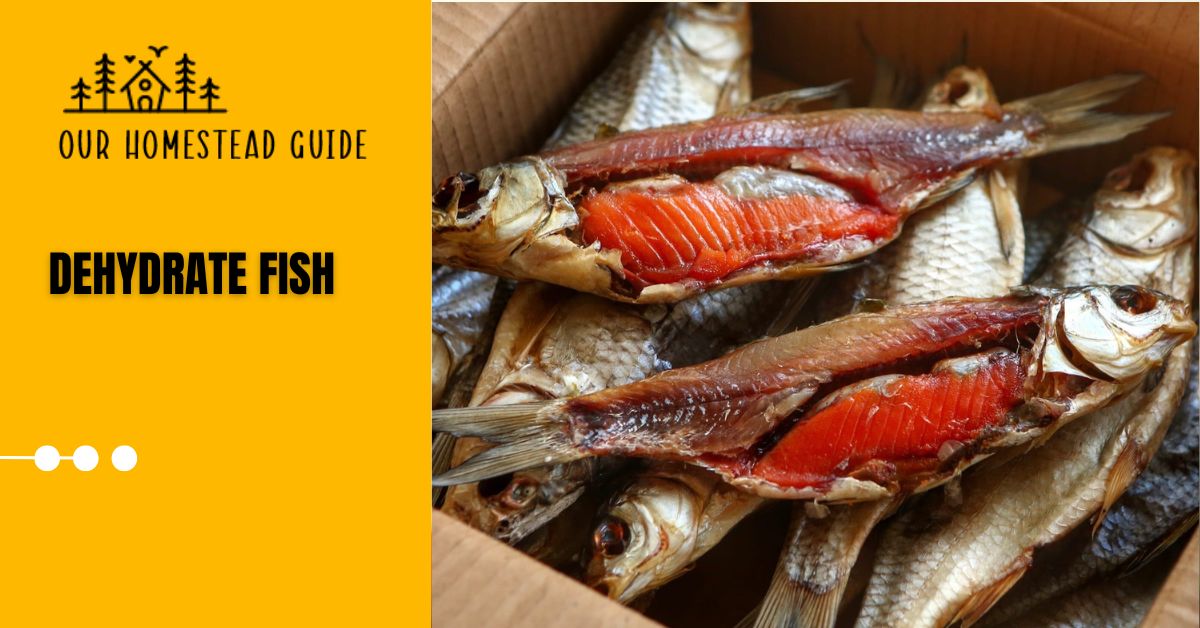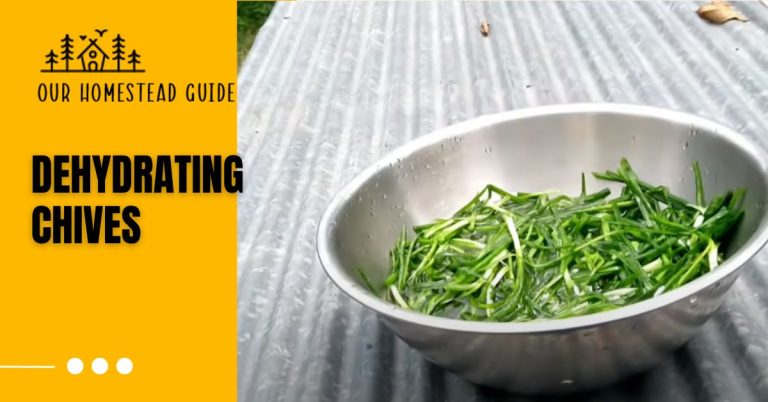How To Make Dehydrate Fish: Easy Ways to Cook & Dry It
Dehydrate Fish is an age-old method of preserving this nutritious and tasty protein source. Dehydrating fish is a terrific alternative if you’re an outdoor enthusiast wishing to prepare your jerky for your next camping trip or simply want to enjoy a healthy snack.
We will cover all you need to know about dehydrating fish in this thorough tutorial, from the fundamental recipe to nutrition statistics and innovative serving options.
Dehydrating fish at home is simple, but rehydrating it for meals might be difficult due to its protein-rich, starch-free composition, which results in chewiness after drying. Longer soak durations or using it in chowders or stews might help increase softness. A food dehydrator is the greatest option for drying fish or preparing delectable fish jerky since it allows for perfect temperature control.
How To Dehydrate Fish?
Dehydrating fish is an age-old method of preserving this delicious source of protein, and it’s also a great way to create tasty snacks. Dehydrate Fish In this step-by-step guide, we will walk you through the process of dehydrating fish, specifically perch.
Whether you’ve just caught some fresh fish or bought them from the market, this technique is easy to master and can be done at home using a dehydrator. Dehydrate Fish So, grab your fish and get ready for a three-day adventure of marinating and dehydrating!
Day 1: Preparation and Marination
- Gathering Your Ingredients: The first step is to gather the necessary ingredients and equipment. You’ll need fresh perch (or any fish of your choice), sea salt (preferably non-iodized), and a food dehydrator. It’s essential to ensure your fish is clean and free of any scales or impurities.
- Cleaning the Fish: Begin by cleaning the perch thoroughly. Remove the fins, gills, and any sharp protruding parts to avoid injuring yourself during the process. Rinse the fish under cold water to remove any dirt or debris.
- Drying the Fish: After cleaning, pat the fish dry with paper towels. This step is crucial as excess moisture can hinder the dehydration process. Ensure both the fish and your workspace are dry.
- Layering with Salt: Dehydrate Fish Now, it’s time to marinate the fish. Use sea salt generously but not excessively. You can also experiment with different types of salt, such as pink Himalayan salt, for added flavor. Layer the fish in a bowl, adding salt between each layer. Be cautious not to over-salt; you can adjust the saltiness to your taste.
- Cover and Refrigerate: Once the fish are salted, cover the bowl and place it in the refrigerator for 24 hours. The salt will not only flavor the fish but also draw out excess moisture, aiding in the dehydration process.
Day 2: Dehydrating the Fish
- Inspect the Fish: After 24 hours, check the fish for readiness. You’ll know they’re ready when you hear a distinctive cracking sound as you pull them apart. This indicates that the salt has penetrated the flesh, and the fish is ready for dehydration.
- Prepare the Dehydrator: Dehydrate Fish Set up your food dehydrator according to the manufacturer’s instructions. Typically, a temperature of around 125-130°F (51-54°C) is suitable for dehydrating fish. Ensure you have enough trays for your fish.
- Arrange the Fish: Place the fish on the dehydrator trays, ensuring they are evenly spaced and not touching. Proper spacing allows for better airflow and even drying.
- Dehydrate for 24 Hours: Turn on the dehydrator and set it to run for 24 hours. During this time, monitor the progress periodically. The fish should gradually become dry and brittle.
Day 3: Enjoying the Dehydrated Fish
- Check for Dryness: Dehydrate Fish On the third day, check the fish’s dryness. They should be firm, brittle, and no longer moist. If they still feel slightly soft, leave them in the dehydrator for a few more hours.
- Cool and Store: Allow the dehydrated fish to cool completely. Once cooled, store them in an airtight container or vacuum-sealed bags to maintain freshness. Properly stored, dehydrated fish can last for several months.
- Savor the Flavor: It’s time to savor the fruits of your labor! Enjoy your dehydrated perch as a tasty, protein-packed snack or a unique addition to your meals. They pair exceptionally well with a cold beer or your favorite beverage.
Recipe: Dehydrating Fish
Ingredients:
Begin with fresh fish fillets such as salmon, trout, or cod to make delightful and shelf-stable dehydrated fish. The seasoning is the key to a great batch; you have the creative flexibility to choose your own seasonings. Dehydrate Fish Classic spices like salt, pepper, and a mix of herbs work well, but marinades of your choice can also infuse your fish with delectable flavors.
Dehydrate Fish Slicing the fish into thin, uniform strips, thoroughly coating them with your chosen sauces or marinades, and then place them in a food dehydrator prepared to around 145°F (63°C). Your fish will convert into a savory, snackable treat as the dehydrator gently removes moisture, making it ideal for trekking . Experiment with different flavor combinations to find your favorite, and then sit back and enjoy the gratifying results of handmade dehydrated fish.
Instructions:
- Prepare the Fish: The first step in making tasty and well-textured dried fish is to prepare the fish. Begin by choosing the freshest fish fillets available, preferably boneless, to make the process easier and safer. Slice the salmon into thin strips or slices using a sharp knife and a clean cutting board. Dehydrate Fish To encourage even drying, aim for a uniform thickness of 1/8 to 1/4 inch (3-6 mm).
This attention to detail not only ensures uniform results but also aids in the drying of the fish, keeping its natural flavors and nutritional worth. Dehydrate Fish You’re ready to go on to the next steps in making your wonderful dehydrated fish snacks or ingredients now that your fish has been properly prepared.
2. Season the Fish: Seasoning the fish is an important step that allows you to infuse your dehydrated fish with your selected flavors, creating a fully unique snack or component. Begin by liberally seasoning the fish slices. Classic seasonings like salt and pepper can improve the natural flavor of the fish, while herbs like thyme, dill, or rosemary can add depth and complexity.
Consider marinating the fish in your favorite mixture for a few hours before dehydrating it for a more adventurous flavor profile. This procedure not only gives excellent flavor but also ensures that every bite is overflowing with your distinct culinary tastes. Whether you opt for a simple seasoning or a complex marinade, this step adds a delightful twist to your dehydrated fish, making it a versatile and mouthwatering treat.
3. Preheat the Dehydrator: To successfully Dehydrate Fish your seasoned fish, preheat your chosen dehydrator to the appropriate temperature for this process, which is normally approximately 145°F (63°C). This procedure guarantees that the fish dries uniformly and completely while retaining its flavors and textures.
Dehydrate Fish The precisely controlled temperature gently removes moisture from the fish, making it into a shelf-stable, tasty snack or ingredient. You’re well on your way to making a batch of homemade dried fish that will satisfy your taste buds and act as a versatile addition to your culinary arsenal now that your dehydrator is preheated and ready to go.
4. Load the Dehydrator Trays: Loading your dehydrator trays efficiently is a critical step in transforming seasoned fish into flawlessly dehydrated pleasures. Arrange the seasoned fish slices on the trays in a single layer, making sure they don’t overlap or touch. This spacing is necessary for proper air circulation within the dehydrator, which allows warm, dry air to reach all sides of the fish slices equally.
Adequate airflow is essential for uniform dehydration, which ensures that each piece dries properly and consistently. With this thorough planning, you’ll be well on your way to generating a batch of dried fish with great flavor and texture, making it a delectable and healthful snack or component.
5. Dehydrate the Fish: After Dehydrate Fish you’ve precisely put your seasoned fish slices on the dehydrator trays, it’s time to start the dehydration process. Insert the loaded trays carefully into the dehydrator and set the timer according to the manufacturer’s instructions. The length of dehydration depends on a number of factors, including the thickness of the fish slices and the humidity levels in your area.
Expect the dehydration process to take between 4 and 12 hours. Dehydrate Fish Check the progress of your fish on a regular basis as you approach the planned time period to ensure that it reaches the proper level of dryness. Dehydrate Fish This perseverance and attentiveness will result in flawlessly dehydrated fish, a delectable and varied addition to your culinary arsenal.
6. Check for Dryness: It’s critical to keep an eye on your fish while it goes through the dehydration process. Check the fish for dryness on a regular basis to ensure it achieves the ideal consistency. The optimum outcome is firm fish that is slightly flexible to the touch but not brittle. You want a texture that holds its shape without crumbling, making it both tasty and acceptable for long-term storage.
This stage may take some time depending on the thickness of the dehydrated fish slices and the unique conditions of your dehydrating environment, so be patient and diligent. This meticulous monitoring ensures that your dehydrated fish is perfectly cooked, ready to be enjoyed as a tasty snack, or incorporated into a variety of meals.
7. Cool and Store: Dehydrate Fish When your dehydrated fish has reached the required texture and dryness, allow it to cool before storing. Allow the dehydrated fish to completely cool to room temperature; this step is critical to avoid condensation inside the storage container, which can lead to deterioration.
Transfer the dehydrated fish to an airtight container or vacuum-sealed bag after chilling to keep freshness and protect it from moisture and air. When properly kept, homemade dried fish may be a practical and tasty snack for outdoor adventures or a versatile addition to add flavor and nutrition to your meals.
Notes:
- Dehydrate Fish is a simple and nutritious food that is ideal for trekking, camping, or snacking on a regular basis.
- Dehydrate Fish can have a shelf life of several months to a year if properly preserved.
- Experiment with various seasonings to produce distinct flavors.
Serving Ideas:
Dehydrated fish is incredibly versatile. Here are some creative serving ideas:
Fish Jerky: Fish jerky is an excellent choice for a high-protein snack that you can have on the go. Its portability and low weight make it an ideal choice for busy days, outdoor outings, or as a quick and nutritious snack whenever you need an energy boost.
Fish jerky is not only convenient but also a healthy alternative to traditional snacks, with its wonderful flavor and long shelf life, providing a protein-packed punch that satisfies your desires and keeps you nourished throughout the day.
Salad Topping: Using desiccated fish as a salad garnish is a wonderful way to give your greens a unique crunch and a burst of savory flavor. Dehydrate Fish Whether you’re eating a basic garden salad or a more sophisticated concoction, crumbled dehydrated fish can take it to the next level. I
Plus, you receive more protein and nutrients, making your salad not only more delicious but also more gratifying and nutritious. Try it, and you’ll find that dehydrated fish is a versatile addition that can elevate your salads from ordinary to outstanding.
Pasta: Dehydrate Fish can add a tasty seafood flavor to your favorite pasta meals. To integrate this distinct flavor, rehydrate the dehydrated fish in warm water or a tasty broth until it regains moisture and texture. Then, combine it with your preferred sauce, vegetables, and seasonings in your pasta.
You’ll like the rich and delicious flavor that seafood contributes to your supper, whether it’s a basic spaghetti with marinara and rehydrated fish or a creamy Alfredo with flaked fish. It’s an excellent way to add flavor and nutrition to your pasta recipes, transforming a simple dinner into a culinary feast.
Trail Mix: Making a one-of-a-kind trail mix by incorporating dehydrated fish is a wonderful idea for people searching for a savory variation on the standard snack. For a tasty and protein-packed trail mix, combine the dehydrated fish with a variety of nuts, dried fruits, and seeds.
The salty tones from the fish balance off the sweetness of the dried fruits and the nutty crunch of the nuts and seeds, resulting in a well-balanced and invigorating snack ideal for hiking, camping, or any outdoor excursion. It’s a delicious combination of flavors and textures that will keep you fuelled and satisfied on your travels. Don’t be scared to try new combinations to find your favorite trail mix recipe.
Conclusion:
Finally, Dehydrate Fish provides a rewarding and practical way to enjoy this marine treat throughout the year. With the right tools and methods, you may create a wide variety of delectable snacks and entrees. Whether you are a seasoned outdoor enthusiast or merely interested in food preservation, going on the road of dehydrating fish is well worth the effort—it is an attempt that will leave you content and pleased with the results!
Most Frequently Asked Questions!
1- How long does it take to dehydrate fish?
The drying time for fish varies based on factors such as fillet thickness, humidity in your location, and the type of dehydrator you use. It usually takes 4 to 12 hours to completely dehydrate fish.
2- What type of fish is best for dehydration?
Dehydrate Fish Lean fish like cod, haddock, trout, or salmon are ideal for dehydration. Fatty fish, such as mackerel or tuna, can also be used, but they may need more rigorous pre-treatment to remove excess oil.
3- Do I need to pre-cook the fish before dehydrating it?
Yes, precooking the fish before dehydrating is highly advised. This not only assures food safety by eradicating any dangerous germs, but it also improves the finished product’s texture.
4- How do I store dehydrated fish?
Store your dried fish in an airtight container in a cold, dark area to keep it fresh. Bags that have been vacuum-sealed or glass jars with tight-fitting lids work nicely. Proper storage can increase the shelf life by several months or even years.
5- Can I rehydrate dehydrated fish for recipes like soups or stews?
Yes, dried fish may be rehydrated by soaking it in water for a few hours or integrating it straight into dishes such as chowders, soups, or stews. Because of the high protein content of the fish, rehydration may take some time.
6- Are there any safety concerns when dehydrating fish?
Yes, while dehydrating fish, it is critical to observe food safety requirements. During the pre-cooking procedure, make sure the fish achieves a healthy internal temperature, and use adequate hygiene to avoid cross-contamination.
7- What should I look for in a food dehydrator for fish?
Look for a food dehydrator that has changeable temperature settings, enough drying area, and efficient air circulation. Maintaining the optimum drying temperature requires a dehydrator with temperature control.
you may also like this article.







